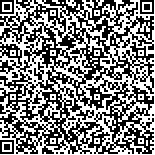下载中心
优秀审稿专家
优秀论文
相关链接
摘要

根据雷达后向散射系数建立了红树林湿地植被生物量的估算模型,并运用遗传算法确定其中非线性模型的最优参数.对比分析表明,雷达后向散射系数模型比NDVI模型在植被生物量估算中有更高的精度.使用NDVI指数有可能导致某些植被类型的生物量估算出现较大的误差.这是因为一些具有密集冠层的草本植被(例如互花米草等)有比红树林高得多的NDVI值.而雷达遥感所具有的侧视特点及一定的穿透能力能有效地获取植被的垂直信息,大大减低植被生物量估算的误差.
Guangdong in south China has the largest area of mangrove wetlands in China.However,the mangrove wetlands have been rapidly diminishing because of the rapid urbanization.Remote sensing can be used to provide important information for the protection of the mangrove wetlands.Traditional optical remote sensing has difficulties in monitoring the wetlands in this region because of frequent cloud covers.The well-known NDVI index from optical remote sensing has drawbacks in obtaining the trunk information for mangrove forests.In this paper,comparisons were made between the NDVI models and backscatter models in estimating wetland biomass.Regression and analytical models were used to establish the relationships between remote sensing data and wetland biomass.The optimal parameter values for the analytical model were determined by using genetic algorithms.Experiments indicate that the models using radar remote sensing data have significant accuracy improvement in terms of Root Mean-Square Error(RMSE).It is found that the use of the single NDVI index may produce serious errors in biomass estimation.The errors occur because some herbaceous species with dense canopy,such as Spartina anglica,may have much higher NDVI values than mangrove forests.

